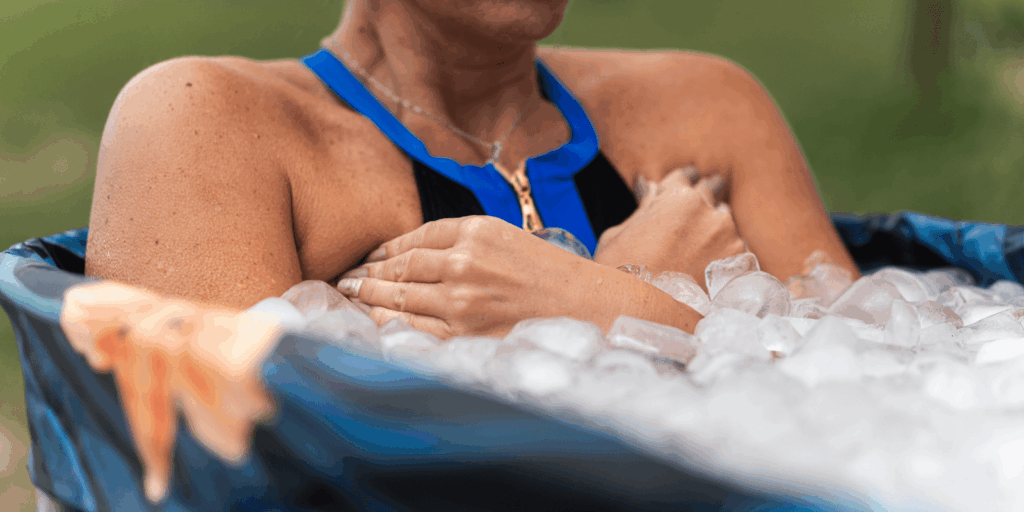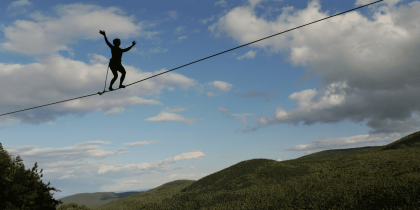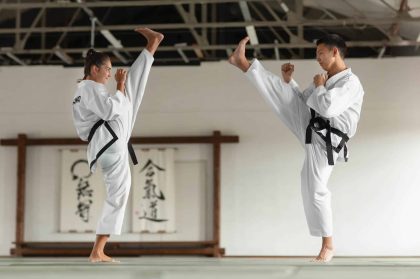More and more athletes are integrating cold baths into their post-training recovery routines. From amateurs to professional athletes, many praise its benefits: improved sleep, reduced muscle inflammation, intense refreshing sensation, and positive effects on physical and mental health.
Originating from Nordic countries, this natural cryotherapy method consists of immersing the body in cold water for a few minutes—often in a tub, bathtub, or portable system set up at home. But between promises of results and potential risks, what does science say? And more importantly, how can you safely practice cold immersion at home without professional equipment?
The benefits of cold baths on the body
Immersion in a cold bath triggers an immediate response from the body. The thermal shock caused by the drop in temperature leads to vasoconstriction, followed by vasodilation upon exiting the bath. This mechanism stimulates blood circulation, enhances muscle recovery, and helps eliminate metabolic waste generated by physical effort.
Here are the main benefits observed with regular practice:
- reduction of post-workout muscle soreness
- decrease in inflammation and micro-injuries
- stimulation of the nervous system, reduced chronic stress
- improved sleep quality
- increased cold tolerance through progressive exposure
Cryotherapy, a more intense version of cold bathing using icy water or a cold air/water mix, takes this therapy even further. It’s used in sports, health, and sometimes in specialized spas, but it requires specific (and often costly) equipment.

Are there any risks in practicing cold baths?
Despite their many benefits, cold baths are not suitable for everyone. Immersion in cold water causes a thermal shock that can be poorly tolerated, especially by individuals sensitive to cold or with heart conditions. Before starting this recovery method, it’s strongly recommended to consult a healthcare professional.
Here are a few essential precautions to follow:
- do not stay in the cold bath for more than 10 to 15 minutes
- avoid prolonged exposure if extremely tired or after an intense workout
- get out immediately if you feel dizzy, experience uncontrollable shivering or numbness
- warm up the body well after the session: use a blanket, drink something hot, or go to a sauna
As with any physical practice, it’s important to listen to your body, increase exposure progressively, and never neglect safety. Even a recovery moment at home, in a simple bathtub, can pose risks. That’s why having appropriate sports insurance remains a smart precaution—whether you’re doing it for sport, well-being, or therapy.
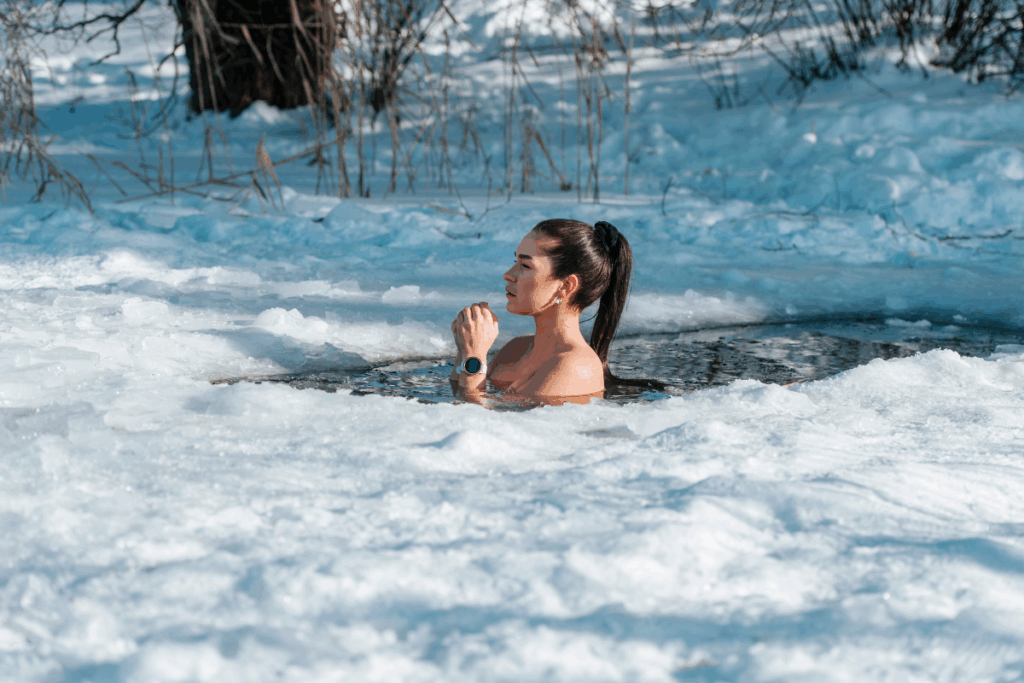
How to take a cold bath at home?
You don’t need a luxury spa or cryotherapy center to benefit from cold immersion. It’s entirely possible to create your own setup at home, depending on your budget, available space, and desired frequency.
Here are the main options:
- a standard bathtub filled with cold water and ice: simple, affordable, and ideal for occasional use
- a plastic or wooden tub, with or without a lid, to keep the water cold for longer
- a portable or foldable model, easy to set up, empty, and store
- a high-end ice bath, fixed, equipped with an automatic cooling system and sometimes connected to a dedicated app
Prices vary greatly depending on the product: from around €80 for a basic model to over €1000 for a professional version with full installation. Delivery is often included with high-end models, sometimes along with a user guide or access to a dedicated info page.
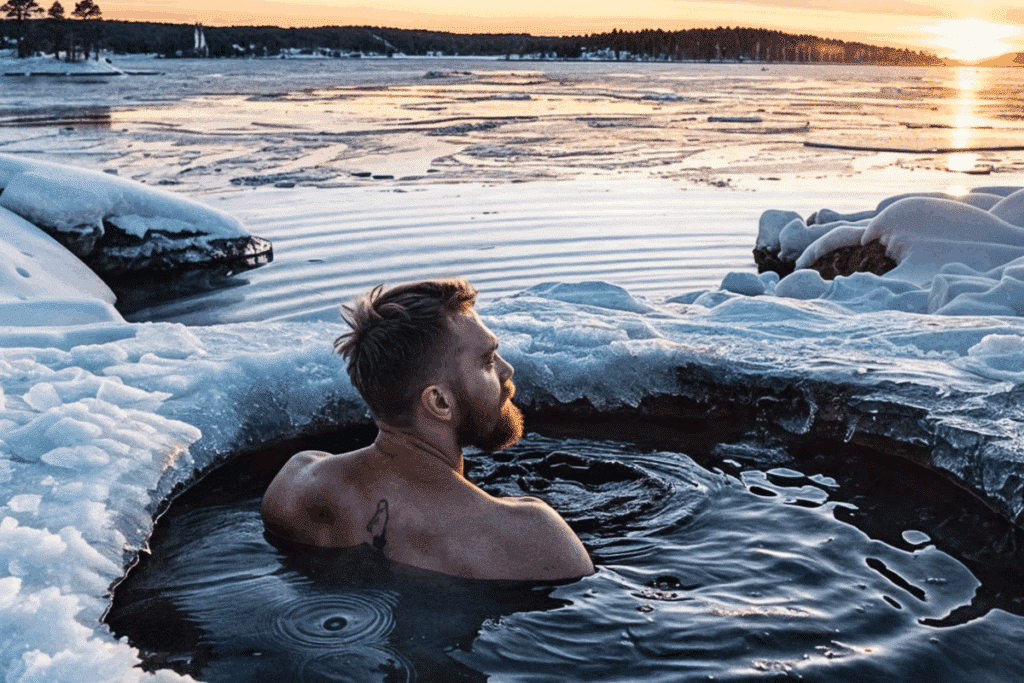
What is the most effective method?
You don’t need to stay in icy water for hours to feel the effects. What matters is consistency, water temperature, and immersion duration. A well-balanced practice stimulates the body while avoiding risks related to overexposure.
Most common recommendations:
- a water temperature between 10°C and 15°C
- 5 to 12 minutes of immersion, depending on your habit, fitness level, and cold tolerance
- 1 to 3 sessions per week, especially after intense training or competitions
Many athletes and endurance sports practitioners also use the contrast bath method, alternating between hot and cold water. This technique promotes vasodilation, muscle recovery, and waste elimination. It’s particularly helpful for runners, triathletes, or those engaging in repeated intense efforts.
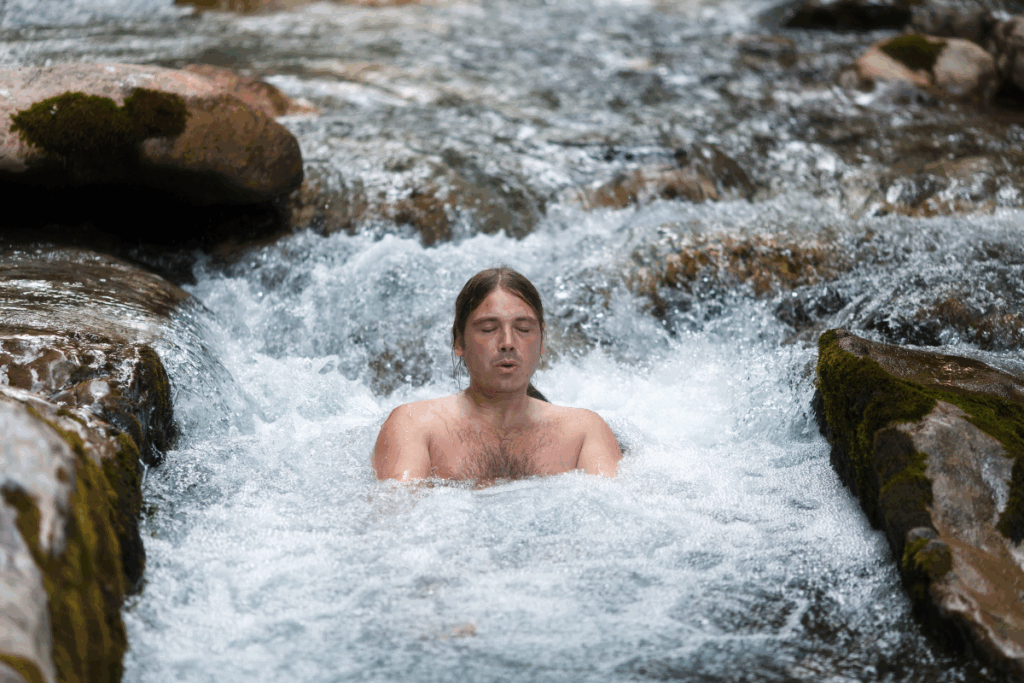
Cold baths and recovery: for whom?
Cold baths are suitable for all kinds of users:
- High-level athletes or regular amateurs
- Climbers, bodybuilders, or team sports players
- Anyone looking to improve muscle recovery
- Individuals interested in natural methods to enhance health
Whether it’s after a tough workout or a stressful day, cold bathing can become a powerful recovery ritual—as long as it’s practiced safely and with the right equipment.
